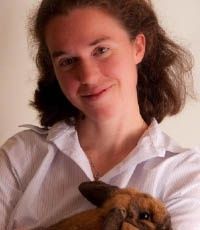Getting Ready for Goats 6 Things to Know


For the small-scale farmer who wants to try keeping livestock for the first time, there are plenty of reasons to consider raising goats. Some breeds—like the Nigerian Dwarf and Toggenburg—are used as dairy animals, and others—like the Boer or Spanish—are typically raised as meat animals (and some breeds are suitable for both).
Goats are small animals, which is a plus for novices. Even the “large” breeds aren’t too big, so they can be less intimidating for beginners to work around than cattle or horses.
Ready to give goats a try? Here are a few things you’ll want to keep in mind:
1 You need at least two
Goats really don’t like to be alone. Just as with other types of livestock that are herd animals—horses, cattle, sheep, alpacas—goats can quickly become unhappy if they don’t have the company of at least one other member of their own species. So while your herd doesn’t have to consist of dozens of individuals, you do need at least two goats in order to make a happy home for goats.
2 You need escape-proof fencing
Easier said than done! Goats are, by nature, fabulously maneuverable—able to climb, jump, pull, and wiggle themselves up, over, and across just about any obstacle. Think about wild Rocky Mountain goats that live happily on near-vertical mountain slopes, and you get the idea.
Even though domestic goats usually aren’t quite that spry (and may be a little heftier!), you will have to make sure they can’t escape their enclosure, especially if you have a buck (male goat) you want to keep separate from does (female goats).
A determined buck will surprise you with the heights he can scale
There are a few types of fencing that will work well for goats. Welded or woven wire can be a good choice, as it’s sturdy, although care must be taken to ensure that the holes are small enough to prevent entanglement, especially for goats with horns. Five-strand electric fencing can also work, but may not be the best option for bucks. Make sure the fence is tall enough to keep your goats in—four feet is a common height, although you may wish to go taller to help prevent predators.
3 You need to supply fresh water and minerals
When it comes to water, goats are no different from other livestock: they need fresh, clean water every day. Having a water source in or near your barn will make this task easy! Plus, since the average goat will likely drink less than five gallons per day, the watering requirements aren’t too challenging. High quality hay and feed are also an obvious necessity. But goats also need a daily supply of mineral supplements. For example, goats require a much higher amount of copper in their diets than sheep, and unlike cows, goats do better with loose minerals than a mineral block. Be sure to buy minerals that were designed specifically for goats, and goats alone!
4 You’ll need a shelter
Your goats need a place to get in out of the wind, rain, sun, and snow, and to get away from bugs. While the exact needs for your goat shelter will depend on your climate, it’s imperative that the shelter be sturdy, comfortable, well ventilated, and provide adequate protection from predators and weather.
5 You need to keep them entertained!
While obviously not as critical as feed, shelter, and water, supplying your goats with a means of entertaining themselves is nevertheless an important factor to their overall happiness. Goats naturally love to climb, so in addition to a basic sleeping shelf in their shelter, you might consider building some goat-safe outdoor climbing toys. These could be as simple as a few large stumps or an old tractor tire for your goats to jump on, or as intricate as an entire playhouse with platforms, staircases, and even bridges! Sometimes it’s hard to tell who has more fun—the goats, or the owners who build the toys.
6 You will need some special equipment
To simplify your life with goats, here are a few things to think about purchasing!
Collars—Whenever you’re handling your goats, you’ll want some sort of lead so you can move them about easily. Collars are one of the simplest and most economical choices. You can buy nylon or leather collars, but the most common type of collar is made of plastic chain. These are popular for their affordability and their safety—most plastic collars are designed to break away if they get stuck on a fence or tree branch, allowing your goat to escape that situation.
Hoof trimmers—While horse owners enjoy the option of having a farrier handle their equines’ pedicures, it’s likely that you’re going to be taking care of your goat’s hooves yourself. So be sure to buy a pair of good hoof trimmers to make the job easier! Also, be sure to thoroughly research the topic and find someone knowledgeable to demonstrate the technique before trying it on your own.
A milking stand—Even if you’re not going to be milking your goats, a milking stand is worth the investment (or the time it takes to build one yourself). Whether you’re grooming, trimming hooves, or administering medical care, a stand takes the place of another person by holding your goat securely while you work.
Tags:Country Critters

Acreage Life is part of the Catalyst Communications Network publication family.














